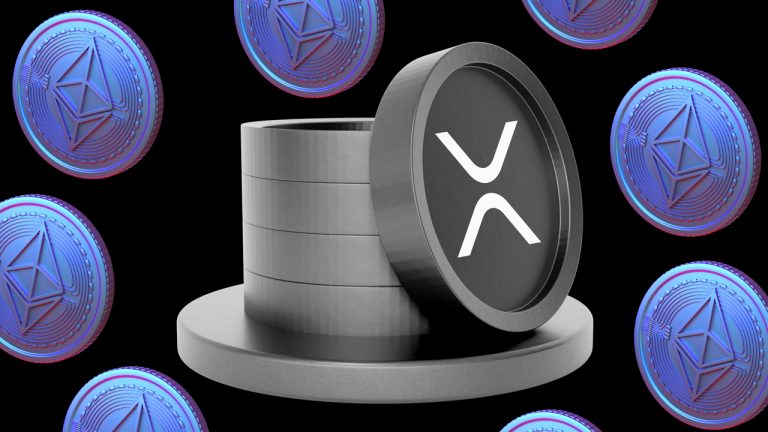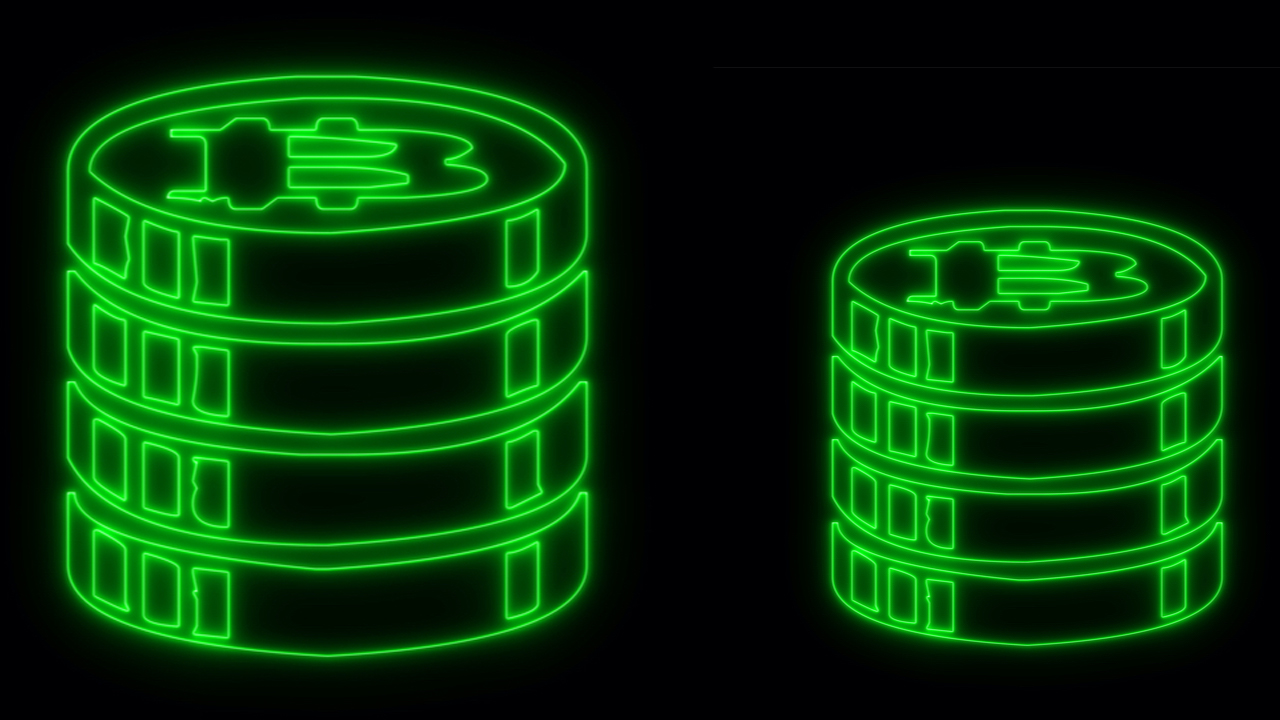 This year, Bitcoin layer two (L2) solutions and sidechains have gained incredible traction, with the top ten Bitcoin-based sidechains or L2 protocols now controlling a combined $1.31 billion in total value locked (TVL). The latest figures reveal that more than 56% of this total is held within two prominent networks: Core and Bitlayer. Core and […]
This year, Bitcoin layer two (L2) solutions and sidechains have gained incredible traction, with the top ten Bitcoin-based sidechains or L2 protocols now controlling a combined $1.31 billion in total value locked (TVL). The latest figures reveal that more than 56% of this total is held within two prominent networks: Core and Bitlayer. Core and […]
One Ethereum bull hopes the launch will help onboard a host of other crypto companies and financial institutions onto Ethereum.
The Ethereum community appears to have taken a bullish view of Coinbase’s newly announced layer-2 network, Base, which has been described as a “massive confidence vote” and a “watershed moment” for the blockchain network.
Secured on Ethereum and powered by layer-2 network Optimism, Base aims to eventually become a network for building decentralized applications (DApps) on the blockchain. The layer-2 network is currently in its testnet phase, according to Coinbase CEO Brian Armstrong.
0/ Hello world.
— Base (@BuildOnBase) February 23, 2023
Meet Base, an Ethereum L2 that offers a secure, low-cost, developer-friendly way for anyone, anywhere, to build decentralized apps.
Our goal with Base is to make onchain the next online and onboard 1B+ users into the cryptoeconomy.https://t.co/Znuu3o3pJw
Members of the crypto community such as Ryan Sean Adams, host of the Bankless Show, believe the move “is a massive vote of confidence for Ethereum,” which could set a precedent for cryptocurrency companies and financial institutions to use Ethereum as the settlement layer of choice.
2/ This sets precedent that other crypto companies will follow, then Fintechs, then banks. Eventually the world will use Ethereum as a settlement and property rights system.
— RYAN SΞAN ADAMS - rsa.eth (@RyanSAdams) February 23, 2023
Coinbase has approximately 110 million verified users and has partnered with 245,000 companies in over 100 countries since it was founded in 2012. Its cryptocurrency exchange is the second largest in terms of trading volume, behind Binance according to CoinGecko.
“If Coinbase converts 20% of its 110m verified users to Layer 2 users in the coming years, this alone will 10x the total number of crypto native users,” Adams added.
Adam also commended Coinbase for opting to open-source Base and believes the new layer-2 network will bring about even more block space demand on Ethereum.
Coinbase just announced that they are launching a layer 2, named Base, on Ethereum and powered by Optimism.
— sassal.eth (@sassal0x) February 23, 2023
Ethereum is becoming the world's settlement layer.
Meanwhile, Sebastien Guillemot, co-founder of blockchain infrastructure firm dcSpark, suggested that Coinbase made a wise decision to go with a layer 2 as opposed to an independent sidechain, noting that “almost all” cryptocurrency transactions and value locked on Ethereum resides on layer 2s these days.
Coinbase announced Base, a new L2 (based on the Optimism L2)
— Sebastien Guillemot (@SebastienGllmt) February 23, 2023
L2s continue to dominate the industry
- Almost all txs in crypto are on L2s
- Almost all TVL in crypto are on L2s
- More devs working on L2s than basically every L1
Sidechains (which aren't L2s) are a waste of time
Ryan Watkins, the co-founder of crypto-focused hedge fund Syncracy Capital, described the news in a Feb. 23 tweet as a “watershed moment” in the Ethereum rollup ecosystem. He added that there was “likely no one better” positioned than Coinbase to onboard the next 10 million users and institutions to Ethereum.
Not everyone was bullish though.
Gabriel Shapiro, general counsel of investment firm Delphi Labs, explained in a Feb. 23 Twitter post that launching a centralized layer-2 network “opens the door” to unwanted SEC scrutiny.
Related: Coinbase beats Q4 earnings estimates amid falling transaction volume
“A centralized L2 that trades lots of tokens any number of which could be alleged securities, or does lots of DeFi transactions that arguably might alleged to be regulated (securities swaps etc), opens the door to the SEC making new kinds of secondary market claims,” wrote Shapiro, adding:
“imo, this will accelerate the SEC's "secondary market" agenda re: blockchain securities issues, because they can't let an SEC registrant "get away with" potential violations & build up a legal arbitrage strategy right under the SEC's nose.”
Shapiro’s concerns come as the SEC has recently upped its enforcement efforts against several stablecoin issuers and staking service providers of late.
Regarding the launch of Base, the lawyer opined that it could be a “bad step for them” and inflict “collateral damage” on the rest of the ecosystem, particularly in the event that the SEC finds a vulnerability to expose:
overall, if indeed Coinbase's motives are regulatory in nature, it's not only a bad step for them, but could threaten dangerous collateral damage to the rest of the ecosystem
— _gabrielShapir0 (@lex_node) February 23, 2023
if their motives are regulatory, they should've waited till all the infra can be really decentralized

Smart contract platform Cardano (ADA) is launching a new sidechain proof of concept that is compatible with Ethereum (ETH). In a new announcement, Input Output Hong Kong (IOHK), the development team behind Cardano, says it’s launching a new public testnet compatible with the Ethereum Virtual Machine (EVM). According to Stevan Lohja, IOHK’s developer relations manager, […]
The post Cardano (ADA) Launches New Ethereum-Compatible Sidechain Proof of Concept appeared first on The Daily Hodl.
 According to an announcement from Ripple’s core development team Ripplex, developers have introduced the first step toward Ethereum Virtual Machine (EVM) compatibility with the XRP-based sidechain XRPL. The XRPL is now live on Devnet and developers can “assess available technologies,” alongside deploying “existing Solidity apps on the EVM sidechain.” Ripple Core Developers and Peersyst Reveal […]
According to an announcement from Ripple’s core development team Ripplex, developers have introduced the first step toward Ethereum Virtual Machine (EVM) compatibility with the XRP-based sidechain XRPL. The XRPL is now live on Devnet and developers can “assess available technologies,” alongside deploying “existing Solidity apps on the EVM sidechain.” Ripple Core Developers and Peersyst Reveal […] The blockchain-powered game Axie Infinity has been a very popular application during the last 12 months, as the game’s NFTs have outpaced every NFT collection today in terms of all-time sales. While Axie Infinity has seen $3.85 billion in all-time sales, Nansen researcher Martin Lee recently published a report on how Ronin, Axie Infinity’s sidechain, […]
The blockchain-powered game Axie Infinity has been a very popular application during the last 12 months, as the game’s NFTs have outpaced every NFT collection today in terms of all-time sales. While Axie Infinity has seen $3.85 billion in all-time sales, Nansen researcher Martin Lee recently published a report on how Ronin, Axie Infinity’s sidechain, […] During the last few months, the Smartbch project has swelled with numerous projects, custom tokens, and the total-value locked (TVL) in five Smartbch decentralized exchange (dex) platforms has jumped more than 180% since November 3. Smartbch Defi TVL Climbs 180% in a Month — Bitcoin Cash Universe Now Has 5 Dex Platforms Eight months ago, […]
During the last few months, the Smartbch project has swelled with numerous projects, custom tokens, and the total-value locked (TVL) in five Smartbch decentralized exchange (dex) platforms has jumped more than 180% since November 3. Smartbch Defi TVL Climbs 180% in a Month — Bitcoin Cash Universe Now Has 5 Dex Platforms Eight months ago, […] On Tuesday, cryptocurrency supporters on social media and forums discussed Blockstream’s Liquid sidechain product as block signing had been down for over 20 hours. While Blockstream had noted the sidechain was undergoing a hard fork upgrade planned for October 5, a number of crypto proponents still scorned the project for being hypocritical toward blockchains like […]
On Tuesday, cryptocurrency supporters on social media and forums discussed Blockstream’s Liquid sidechain product as block signing had been down for over 20 hours. While Blockstream had noted the sidechain was undergoing a hard fork upgrade planned for October 5, a number of crypto proponents still scorned the project for being hypocritical toward blockchains like […]
Steady development and strong fundamentals suggest that DOT's rally toward a new all-time high is in the making.
The recent 256% Polkadot (DOT) recovery over the past 56 days has been nothing short of spectacular. Although the price is 23% below its $49.80 all-time high from four months ago, the altcoin's $39 billion market capitalization has outperformed the Ether (ETH) by 66% over the past thirty days.

Polkadot is a blockchain network designed to support various interconnected, application-specific parallel chains, known as parachains. This scalability-focused project breaks up transactions into many shards and processes them in parallel, similar to what ETH 2.0 aims to achieve.
Polkadot refers to the entire ecosystem of parachains that plug into a single base platform known as the relay chain. This baselayer provides security to the network and handles the consensus, finality and voting logic.
To support parachain launches, users vote for projects by locking up DOT tokens. Currently, only Kusama — Polkadot's "canary" network and an early, unrefined release of Polkadot — is holding its own auctions for these slots. Polkadot is expected to initiate the same process over the next couple of months.
Polkadot's ecosystem has been growing consistently and on Sept. 8 SubQuery, a decentralized data aggregator, raised $9 million to build Polkadot's first data aggregation layer.
As an example of this integration, the Moonbeam parachain has tokens built on Polkadot's development tool (Substrate). These tokens can be seamlessly sent to Ethereum wallets and smart contract addresses. On Sept. 9, Moonbeam announced a partnership with Lido, a decentralized liquid staking derivatives protocol currently deployed to Ethereum and Terra.
The latest update came from dTrade, a decentralized exchange. After successfully raising $6.4 million in a seed funding round in May of 2021, the DEX gathered another $22.8 million market-making fund designed to provide "deep liquidity" backed by some of crypto's largest market makers.
Related: Governance proposals and layer-two launches provide a boost to altcoins
Technical analysts are quick to make price projections but investors should analyze Polkadot's derivatives data. For example, a nonexistent futures contracts premium means that investors are not comfortable creating bullish positions using leverage.

DOT's total futures open interest grew to $685 million from $360 million in 30 days and this is a positive indicator because it reflects the willingness of leverage traders to keep their long positions open despite the rally.
In futures contracts trading, both longs (buyers) and shorts (sellers) are matched at all times, but their leverage varies. Eventual imbalances are reflected in the funding rate and derivatives exchanges will charge whichever side is using more leverage to balance their risk.

In the first week of September, a healthy dose of optimism was reflected because the 8-hour funding rate reached 0.10%, which is equivalent to 2.1% per week. Nevertheless, the situation reverted after the 35% price crash on the morning of Sept. 7.
This $22.70 intraday low from a week ago might seem irrelevant since the price of DOT is above $36, but traders' appetite for leveraged long positions has yet to recover from this.
The most likely case is a "glass half full" scenario where investors will regain confidence as the project continues to deliver.
The views and opinions expressed here are solely those of the author and do not necessarily reflect the views of Cointelegraph. Every investment and trading move involves risk. You should conduct your own research when making a decision.